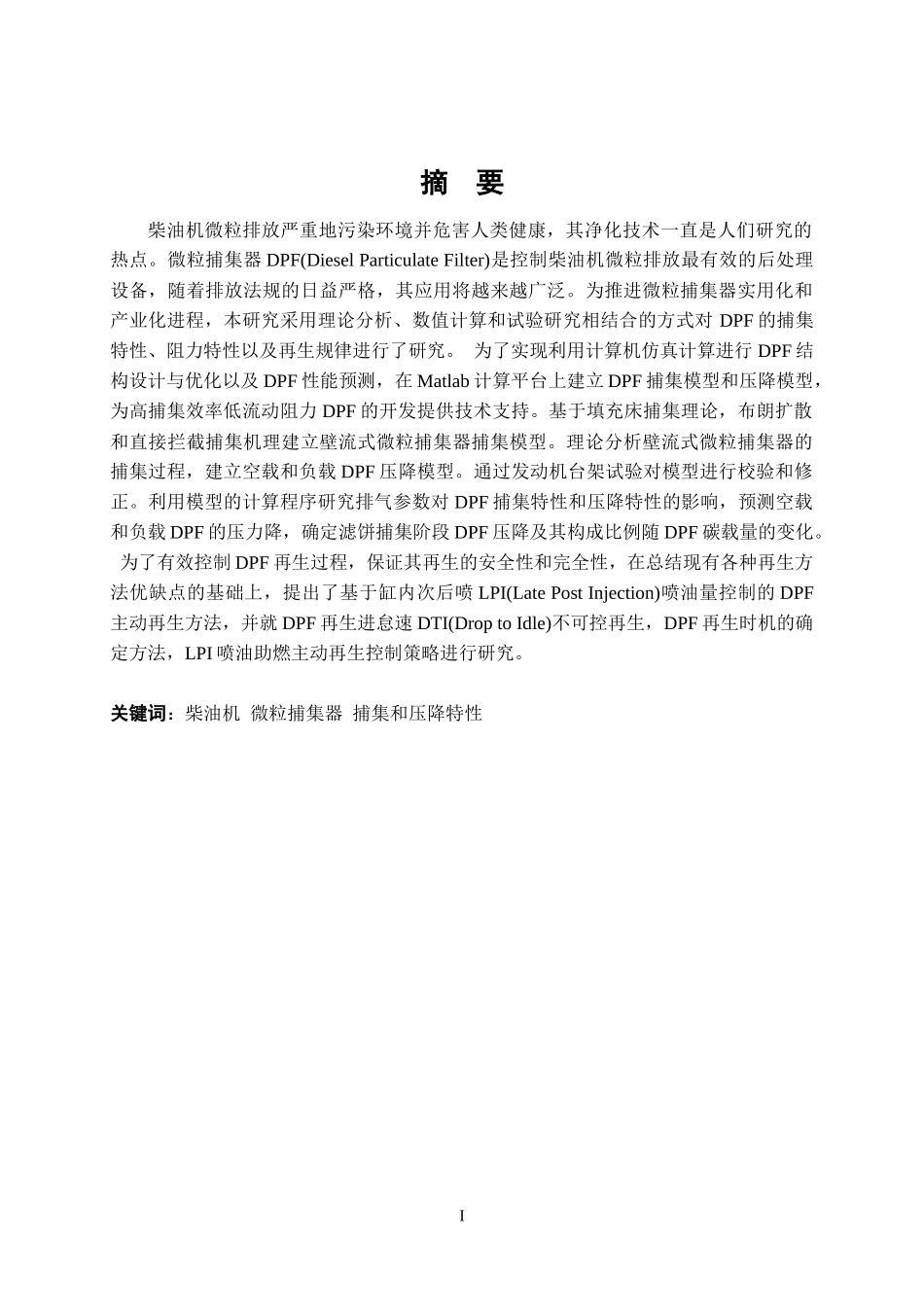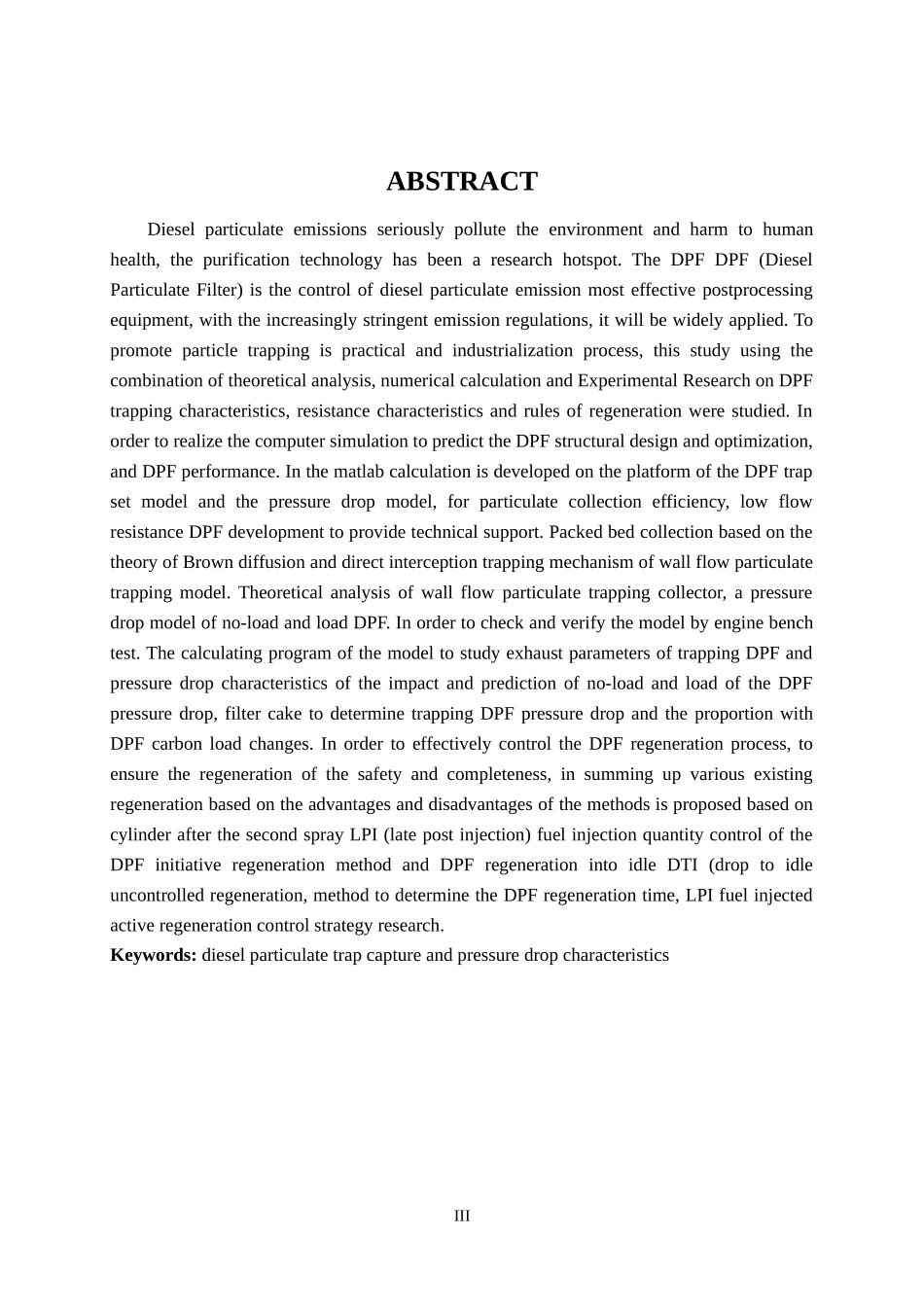摘 要柴油机微粒排放严重地污染环境并危害人类健康,其净化技术一直是人们研究的热点。微粒捕集器 DPF(Diesel Particulate Filter)是控制柴油机微粒排放最有效的后处理设备,随着排放法规的日益严格,其应用将越来越广泛。为推进微粒捕集器实用化和产业化进程,本研究采用理论分析、数值计算和试验研究相结合的方式对 DPF 的捕集特性、阻力特性以及再生规律进行了研究。 为了实现利用计算机仿真计算进行 DPF 结构设计与优化以及 DPF 性能预测,在 Matlab 计算平台上建立 DPF 捕集模型和压降模型,为高捕集效率低流动阻力 DPF 的开发提供技术支持。基于填充床捕集理论,布朗扩散和直接拦截捕集机理建立壁流式微粒捕集器捕集模型。理论分析壁流式微粒捕集器的捕集过程,建立空载和负载 DPF 压降模型。通过发动机台架试验对模型进行校验和修正。利用模型的计算程序研究排气参数对 DPF 捕集特性和压降特性的影响,预测空载和负载 DPF 的压力降,确定滤饼捕集阶段 DPF 压降及其构成比例随 DPF 碳载量的变化。 为了有效控制 DPF 再生过程,保证其再生的安全性和完全性,在总结现有各种再生方法优缺点的基础上,提出了基于缸内次后喷 LPI(Late Post Injection)喷油量控制的 DPF主动再生方法,并就 DPF 再生进怠速 DTI(Drop to Idle)不可控再生,DPF 再生时机的确定方法,LPI 喷油助燃主动再生控制策略进行研究。关键词:柴油机 微粒捕集器 捕集和压降特性IIIABSTRACTDiesel particulate emissions seriously pollute the environment and harm to human health, the purification technology has been a research hotspot. The DPF DPF (Diesel Particulate Filter) is the control of diesel particulate emission most effective postprocessing equipment, with the increasingly stringent emission regulations, it will be widely applied. To promote particle trapping is practical and industrialization process, this study using the combination of theoretical analysis, numerical calculation and Experimental Research on DPF trapping characteristics, resistance characteristics and rules of regeneration were studied. In order to realize the computer simulation to predict the ...


